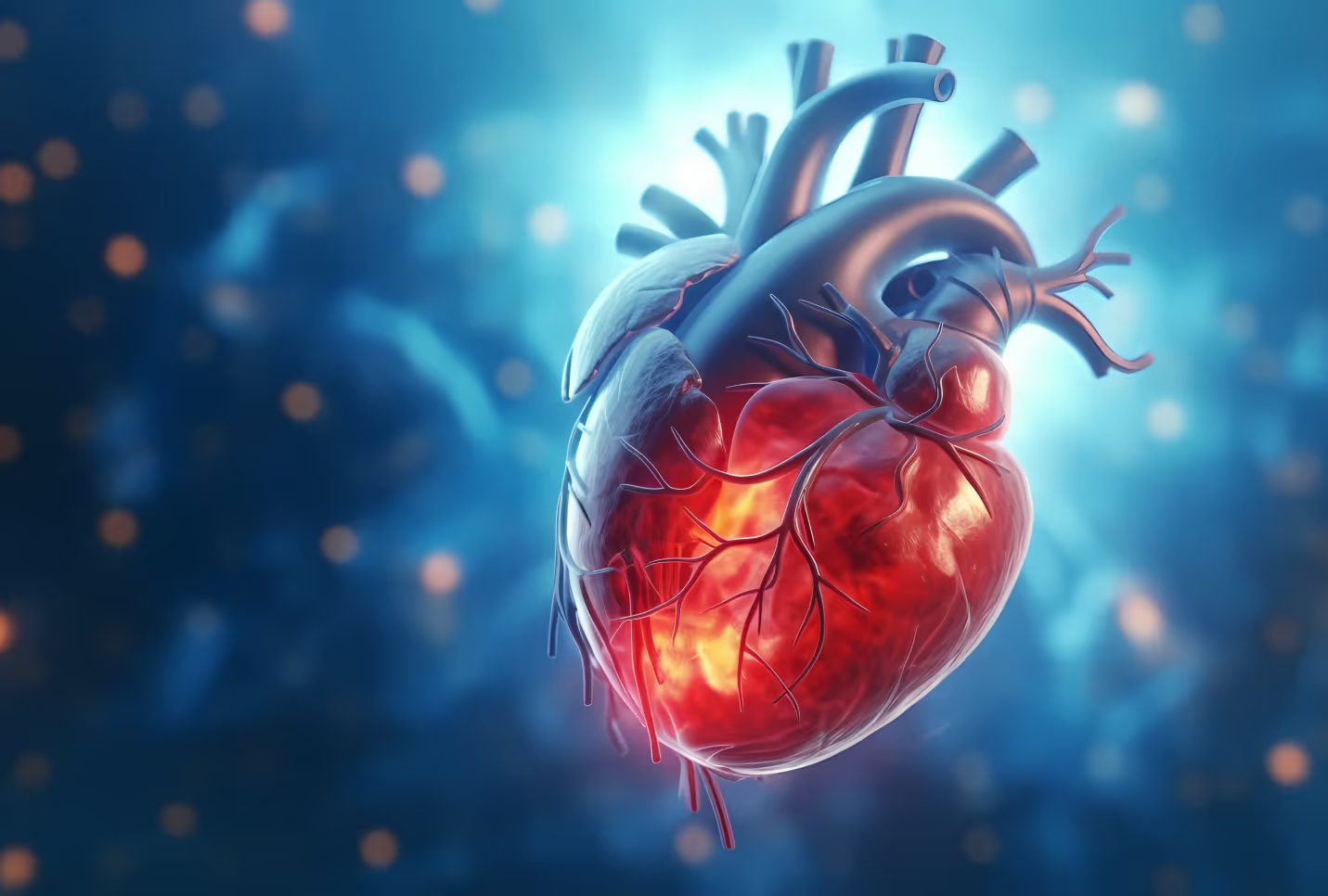
Right-sided heart failure is a medical condition characterized by the American Heart Association as an impaired pumping ability of the right ventricle. The condition can have a significant impact on your health and quality of life, as it can be life-threatening if left untreated. Understanding the causes, signs, and treatment options is crucial for managing this condition effectively.
In this article, we will delve into the intricacies of right-sided heart failure, exploring its underlying causes, symptoms, and available treatments. Whether you or a loved one are personally affected by this condition or seeking to broaden your knowledge, we aim to provide valuable insights that will empower you in your journey towards improved heart health.
What Is Right-Sided Heart Failure?
There are a few types of heart failure, but right-sided heart failure is a specific cardiac condition that occurs when the right ventricle loses its ability to effectively pump enough blood. To grasp the nature of this condition, it's important to first understand the normal functioning of the heart.
The heart comprises four chambers: two atria (upper chambers) and two ventricles (lower chambers). The right side of the heart receives oxygen-depleted blood from the body, which is then pumped to the lungs to acquire fresh oxygen. The left side of the heart receives oxygen-rich blood from the lungs and pumps it out to the rest of the body.
Right-sided heart failure occurs when the right ventricle fails to pump blood efficiently, resulting in reduced blood flow and potential complications, including congestive heart failure.
What Causes Right-Sided Heart Failure?
There are many potential causes of right-sided heart failure, as it can be influenced by a variety of factors and heart conditions. Understanding these causes is crucial in comprehending the complexities of right-sided heart failure and its impact on cardiovascular health.
Left-Sided Heart Failure
The heart is a single organ, so left-sided heart failure is a very common cause of right-sided heart failure. When the left ventricle fails to pump blood effectively, it can lead to fluid backup into the lungs, increasing pressure on the right side of the heart.
The additional strain can cause a ripple effect, which weakens the right ventricle and impairs its ability to pump blood efficiently. Conditions such as heart disease, high blood pressure, and heart attacks can contribute to left-sided heart failure, consequently leading to right-sided heart failure.
Pulmonary Hypertension
Pulmonary hypertension, characterized by high blood pressure in the arteries of the lungs, is another significant cause of right-sided heart failure. The increased pressure in the pulmonary arteries (often caused by a pulmonary embolism) makes it harder for the right ventricle to pump blood into the lungs, resulting in strain and eventual failure.
The persistent elevation of pulmonary pressures places excessive stress on the right side of the heart, compromising its ability to maintain adequate blood flow.
Congenital Heart Defects
Congenital heart disease and defects, which are structural abnormalities present at birth, can contribute to right-sided heart failure. These defects may include malformations of the heart valves, such as pulmonic stenosis, which obstructs blood flow from the right ventricle to the lungs.
Additionally, certain conditions like congenital diaphragmatic hernia or atrial septal defects can lead to increased pressure and strain on the right side of the heart, eventually resulting in failure.
Cardiomyopathy
Cardiomyopathy, a disease that affects the heart muscle, can also impact the right ventricle's ability to pump effectively. This condition weakens the heart muscle, impairing its ability to contract and pump blood efficiently.
Furthermore, coronary artery disease, caused by blockages in the arteries supplying the heart with blood, can lead to reduced blood flow and subsequent right-sided heart failure.
Diastolic Dysfunction
Diastolic dysfunction, characterized by impaired relaxation and filling of the ventricles during the heart's resting phase, can result in elevated pressures in the right ventricle and ultimately lead to right-sided heart failure. This condition is commonly associated with risk factors such as hypertension, obesity, and thyroid disorders.
Chronic Lung Diseases
Chronic lung diseases, including chronic obstructive pulmonary disease (COPD) and sleep apnea, can also contribute to right-sided heart failure. These conditions affect the respiratory system and may lead to low oxygen levels in the blood, putting additional strain on the right side of the heart.
Over time, the continuous strain weakens the right ventricle, hindering its ability to pump blood efficiently.
What Are the Signs of Right-Sided Heart Failure?
Recognizing the signs and side effects of right-sided heart failure is crucial for timely intervention and effective management. Right-sided heart failure symptoms can vary from person to person, but common indicators typically include the following:
Shortness of Breath
Shortness of breath, or dyspnea, is a hallmark symptom of right-sided heart failure. It occurs due to the heart’s inability to pump blood efficiently, leading to inadequate oxygen supply to the body's tissues.
This can often result in difficulty breathing, especially during physical exertion or when lying flat (orthopnea). As a result, it’s common for shortness of breath to contribute to a lack of exercise and weight gain.
Individuals may also experience sudden awakenings at night due to shortness of breath, a condition known as paroxysmal nocturnal dyspnea.
Edema
Edema, or swelling, in the legs and ankles is another common sign of right-sided heart failure. Fluid retention occurs when the heart's pumping function is compromised, causing fluid to accumulate in the lower extremities.
Edema can be particularly noticeable after prolonged periods of sitting or standing and may worsen throughout the day. It is important to monitor edema, as it can progress to involve other areas of the body, such as the abdomen or lungs.
Irregular Heartbeat
Irregular heartbeats, or arrhythmias, can occur in right-sided heart failure due to the heart's compromised electrical system. Arrhythmias may manifest as palpitations, a rapid or irregular heartbeat, or a sensation of the heart skipping beats.
These effects often cause intense chest pain. It’s essential to consult a healthcare provider if you or a loved one experience any significant changes in heart rhythm.
How Is Right-Sided Heart Failure Treated?
The treatment of right-sided heart failure focuses on managing symptoms, improving heart function, and addressing the underlying cause. A multidisciplinary approach involving cardiology specialists, healthcare providers, and other healthcare professionals is typically employed to provide comprehensive care.
The strategies for right-sided heart failure typically a combination of the following:
Diuretics
Diuretics, commonly known as water pills, are often prescribed to help reduce fluid buildup and relieve symptoms of edema. These medications increase urine production and promote fluid elimination from the body. By reducing fluid retention, diuretics help alleviate swelling and improve breathing difficulties.
Medication
Medications such as beta-blockers, ACE inhibitors, and angiotensin receptor blockers (ARBs) may be utilized to improve heart function, reduce blood pressure, and relieve the workload on the heart. These medications help regulate heart rate, blood pressure, and blood vessel constriction, optimizing cardiac performance and promoting better circulation.
Lifestyle Changes
Lifestyle changes play a critical role in managing right-sided heart failure and improving overall well-being. These changes may include following a heart-healthy diet low in cholesterol and sodium, engaging in regular physical activity as recommended by a healthcare provider, quitting smoking, and maintaining a healthy weight.
It is important to adhere to any dietary and exercise restrictions as advised by a healthcare professional. Many people experiencing right-sided heart failure choose to participate in cardiac rehabilitation, a treatment regimen that includes lifestyle changes and medical guidance to help strengthen your heart.
Follow-Ups
Regular follow-up appointments with a healthcare provider, including cardiology specialists, are essential for monitoring the progress of right-sided heart failure, adjusting medications, and evaluating treatment effectiveness.
These visits may involve diagnostic tests such as echocardiograms, chest x-rays, blood tests, electrocardiograms, or cardiac catheterization to assess heart function, identify potential complications, and guide treatment decisions.

The Bottom Line
Understanding the causes, signs, and treatment options for right-sided heart failure is vital in managing this condition effectively. The potential consequences of right-sided heart failure can be fatal if left unchecked.
If you or someone you know has experienced right-sided heart failure, we encourage you to consider Carda Health for personalized in-home recovery. Our virtual cardiac rehabilitation programs, combined with the expertise of clinical exercise physiologists, can provide the support and guidance needed to improve your overall well-being.
Take control of your heart health today and explore the innovative solutions offered by Carda Health.
Sources:
Evaluation and Management of Right-Sided Heart Failure | American Heart Association
Left-Sided Heart Failure: Symptoms, Causes and Treatment | Cleveland Clinic
What are Congenital Heart Defects? | CDC
What Is Cardiomyopathy? | NHLBI
Diastolic Dysfunction: Causes, Symptoms and Treatment | Cleveland Clinic
Dyspnea (Shortness of Breath): Causes, Symptoms & Treatment | Cleveland Clinic
Causes and Signs of Edema | NCBI Bookshelf

.avif)






